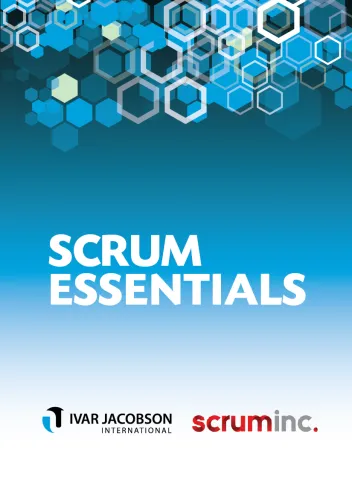We’ve recently had the pleasure of working with Jeff Sutherland on a set of Essence cards that faithfully represent the Scrum Guide. As well as acting as a handy physical, and online glossary, the cards can be used to play games and help us all get better Scrum.
In this new blog series, we will present a selection of the games you can play using the Scrum practice cards and, in some cases, other cards from Essence itself or from other complementary practices.
Most teams are used to representing work items on cards, either physical or electronic, and use them to help organize, prioritise, visualize and track their work. Essence cards however represent the key concepts of working practices. This opens up a whole new set of powerful games, allowing a team to reason about and greatly improve their way of working.
The cards themselves are quite simple providing concise definitions of all of the essential elements of Scrum. The cards are defined using the Essence Standard, but no knowledge of Essence is needed to use the cards.
Here for examples are the cards defining Cross-Functional Team, Product Owner and Daily Scrum. As you can see they are accessible and easy to understand even if you don’t know the detail of the icons and symbols used to decorate the cards.

Download the cards by completing the form at the bottom of this page. The cards are made freely available under copyright. The full deck includes cards that represent the key Scrum principles, roles, activities, work items, and work products.

We love the cards and have identified an initial set of games that can be played to help improve both people’s understanding and application of Scrum. We have organised the games according to when and where they would be of most benefit. As we describe each game we’ll add it to a games catalogue in the form of a ‘periodic table’ with the following categories.
 |
 |
 |
 |
 |
| Learning new ideas and concepts yourself or teaching others. | Setting up the team and their initial way of working. | Coordinating the team’s work and the ongoing planning. | Measuring and assessing the progress made by the team. | Improving the team collaboration, their way of working and overcoming any obstacles. |
To get you started here are some very simple ideas for using the cards:
Just print them out and use them as a glossary or aide memoire.
Use them to add an element of randomness and surprise to your retrospectives by blindly selecting one of the cards and then discussing how well the team applies it and if there are any ways it can be improved.
Use them as a quick way to check understanding in a workshop or training environment. Print a deck of cards, shuffle them and then, for example, get the attendees to randomly pick a card. They then need to 1) explain the concept to the group and 2) describe how it affects them and their team.
Other games are more complicated with multiple cards in play and pre-defined boards to aid collaboration. It’s these games that we’ll be introducing and exploring in this blog series.
If you can’t wait feel free to grab the cards and invent your own games. If you do come up with anything interesting then please let us know and we’ll 1) give you a shout out, 2) help you get it published and 3) add it to the evolving periodic table.
Follow along in this series and we’ll introduce the first game; Practice Patience a great way to perform a holistic retrospective on your Scrum adoption. Stay-tuned as we will post new games every couple of weeks.
Grab your cards here to get started or visit the Free Coaching Card Download Hub to get loads more:

